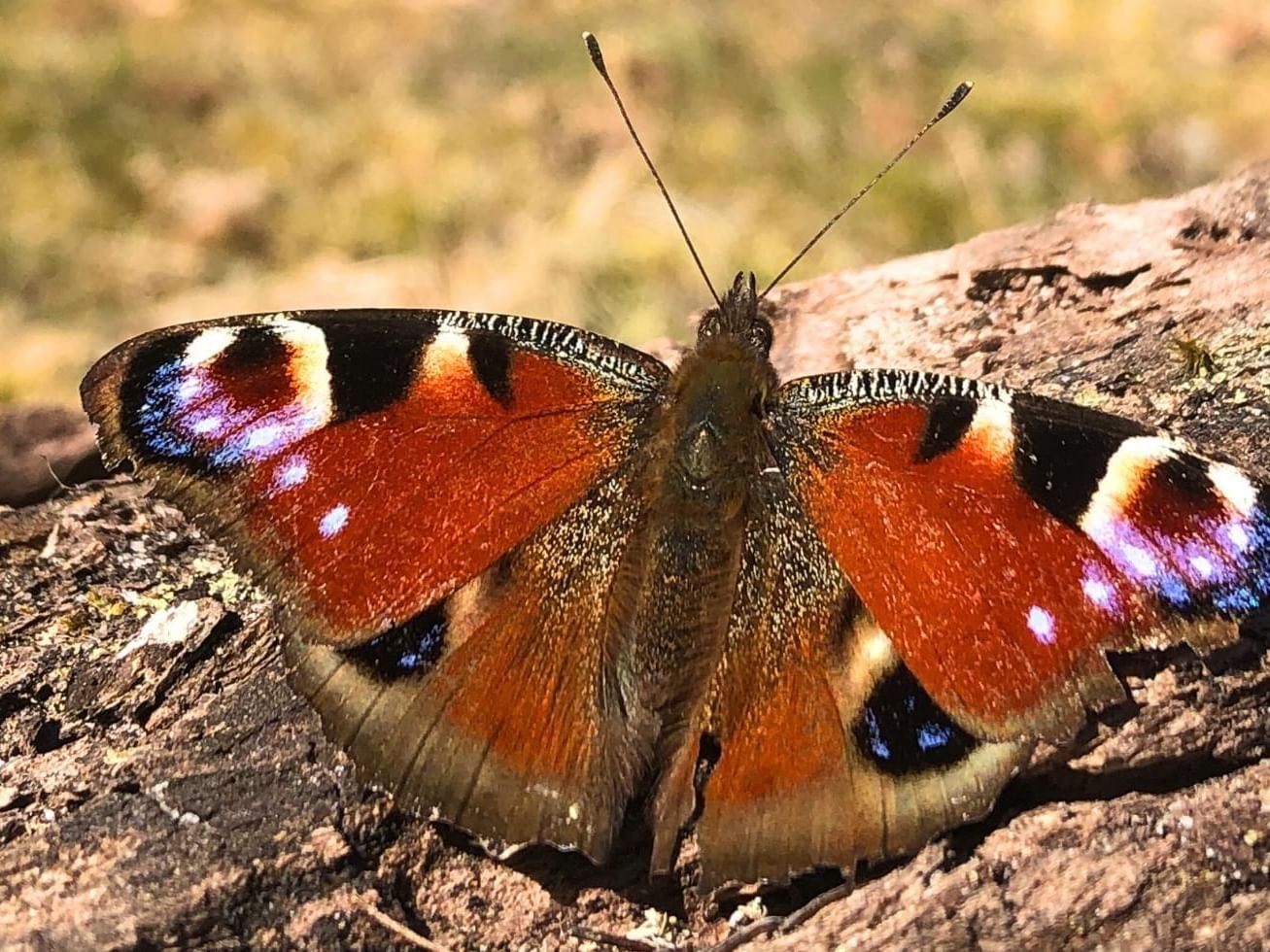Are Peacock Butterflies Rare? Identification, Habitat & More!
Discover This Beautiful Common UK Butterfly Species
Join us as we delve into the captivating world of peacock butterflies, renowned as one of the most beautiful butterfly species in the United Kingdom.
In this article we will explore the question "Are peacock butterflies rare?" and uncover fascinating facts about these beautiful creatures that commonly make an appearance in our beautiful gardens at Gorse Hill.
Are Peacock Butterflies Rare in the UK?
The peacock butterfly is a very common butterfly that you can find in gardens all over England and Wales. However, it's not as common in Scotland.
They love to feed on different flowers and enjoy basking in the sun. You can also spot them in woodlands, parks, and hedgerows.
Adults can be seen on sunny days including in winter, but you're most likely to see them from March to May and from July to September. The caterpillars can be seen from mid-May to July.
How Rare Are Peacock Butterflies?
As the peacock butterfly population is stable their conservation priority is low.
Peacock Butterfly Identification
The Peacock butterfly has a stunning pattern of eyespots on its wings which evolved to surprise and confuse its predators. These eyespots are so unique and noticeable that the butterfly is easily recognised and widely known.
On the undersides of its wings it is very dark in colour and resembles dead leaves, providing excellent camouflage. This butterfly is relatively large in size and is a powerful flyer.
Caterpillars are jet black in colour, velvety, and adorned with small white spots and short, shiny black spines.

What do peacock butterflies eat?
The butterflies enjoy nourishing themselves with sweet nectar from flowers.
In addition to their preference for nectar peacock butterflies also occasionally indulge in tree sap and rotten fruit.
While caterpillars satisfy their appetite by munching on the leaves of stinging nettles and hop.
How long do peacock butterflies hibernate?
During the winter, adult peacock butterflies hibernate in dark places such as sheds and tree holes. They fold their wings and sleep using their dull wings to camouflage and remain undisturbed.
These butterflies awaken from hibernation in the spring sometimes as early as March.
5 Interesting Facts about Peacock Butterflies
Let's explore some fascinating facts about peacock butterflies.
1. When they feel threatened peacock butterflies can produce a hissing sound by rubbing their wings together rapidly.
2. Peacock butterflies have a lifespan of up to 11 months.
3. The scientific name given to them is Aglais io.
4. The wingspan of these butterflies varies between 63-69mm depending on whether they are male or female.
5. Male peacock butterflies are territorial and stay put where they expect to come across a female butterfly.
Are Peacock Butterflies Endangered?
The peacock butterfly is commonly found in the United Kingdom and is not currently considered a threatened species. Its widespread presence showcases its adaptability and resilience.
This beautiful butterfly known for its vibrant colours and distinctive eye-like patterns on its wings serves as a delightful reminder of the diverse wildlife that graces the British landscape.

How do you attract Peacock Butterflies?
If you want to attract butterflies like the peacock to your garden create nectar-rich borders where they can feed.
Plant climbing Ivy and shrubs to provide shelter for insects during the winter.
Some excellent flowers to include are thistle, betony, bluebell, cuckooflower, dandelion, and teasel. Peacock butterflies especially love buddleia plants, so be sure to add them to your garden.
Peacock Butterflies at Gorse Hill
At Gorse Hill we are fortunate to have peacock butterflies in our grounds and we take special care to protect their living environment. We plant various flowers to attract not only the butterflies but also other wildlife.
We recognise the importance of supporting the ecology that surrounds our property, which is why we are proud to be involved with the WWF, a charity that work to conserve biodiversity, reduce humanity's ecological footprint and ensure the sustainable use of natural resources to support current and future generations.
Come and explore our stunning venue and gardens at Gorse Hill, a historic property located in the beautiful Surrey countryside.
Join us for a refreshing drink or a fantastic dining experience, and don't forget to explore our gardens where you might be fortunate to catch a glimpse of the peacock butterfly.

FREQUENTLY ASKED QUESTIONS RELATED TO: Are Peacock Butterflies Rare?
Q: What time of year do peacock butterflies come out?
A: If you're keen to catch a glimpse of the enchanting peacock butterfly, gardens, parks, and woods serve as excellent locations, especially those adorned with buddleia plants. For the optimal chance of spotting caterpillars keep a watchful eye during the months of May to July as they tend to be found feasting on stinging nettles.
Q: Are peacock butterflies rare in UK?
A: Peacock butterflies are not considered rare in the UK. In fact, they are among the most commonly seen butterflies in gardens across lowland England and Wales. However, their presence is relatively less frequent in Scotland.
Q: Do peacock butterflies hiss?
A: Yes, a peacock butterfly has a unique defence mechanism. When threatened it can deter attackers by producing a hissing sound through the rapid rubbing of its wings together.
